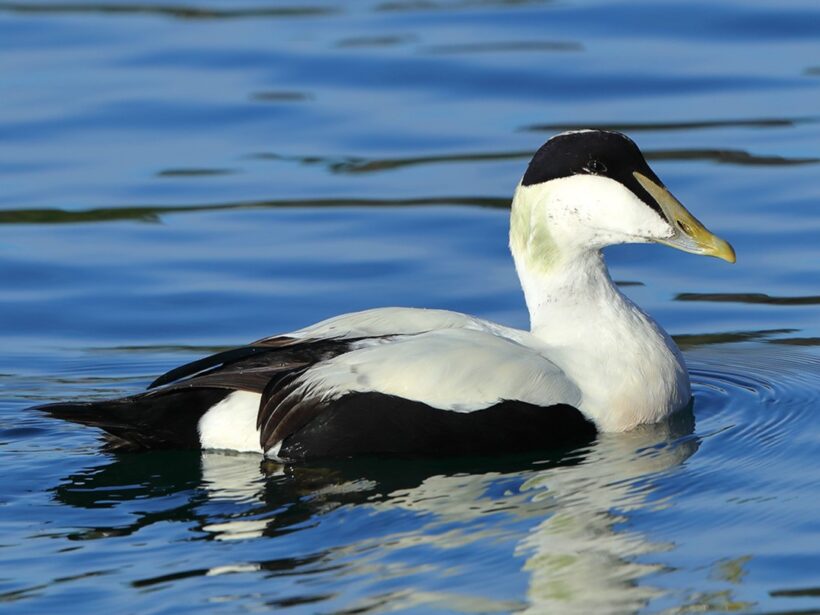Somateria mollissima
![]()
![]()
![]()
The common Eeider is a large sea duck that nests in northern Europe and the Arctic Circle. The feathers collected from its nests are highly prized for stuffing pillows and down jackets. Nesting of the species in France remains rare, with a few pairs found some years in Brittany and a, now regular, installation on Dumet Island. On the other hand, the species regularly winters along the French coast, from the Pas-de-Calais to southern Brittany. Individuals often gather in sheltered bays and feed in shallow waters along the coast (or in freshwater).
Like most ducks, the male loses his colorful nuptial plumage in late summer, replacing it with a brown interbreeding plumage resembling that of the female. During this moult, which can last 2 to 3 weeks, it is unable to fly and remains on the water.
Studies have shown that Common Eiders are strongly repelled by the presence of offshore wind turbines on their migration route (Larsen & Guillemette 2007,
https://doi.org/10.1111/j.1365-2664.2007.01303.x
) and their wintering grounds.
To discover the areas of importance for wintering eiders along the French coast, individuals are captured in winter directly at sea from a boat, in sheltered bays where the birds gather. The common eider are equipped with OT20-D GPS, which are specially designed for diving, recording pressure and depth. These 23g tags transmit data regularly via 3G and are attached to the feathers on the bird’s back with special tape. The tags fall off after a few weeks or months as the tape wears down or the feathers moult.
![]() Migratory in France
Migratory in France
![]() Breeder in France
Breeder in France
![]() Wintering in France
Wintering in France

